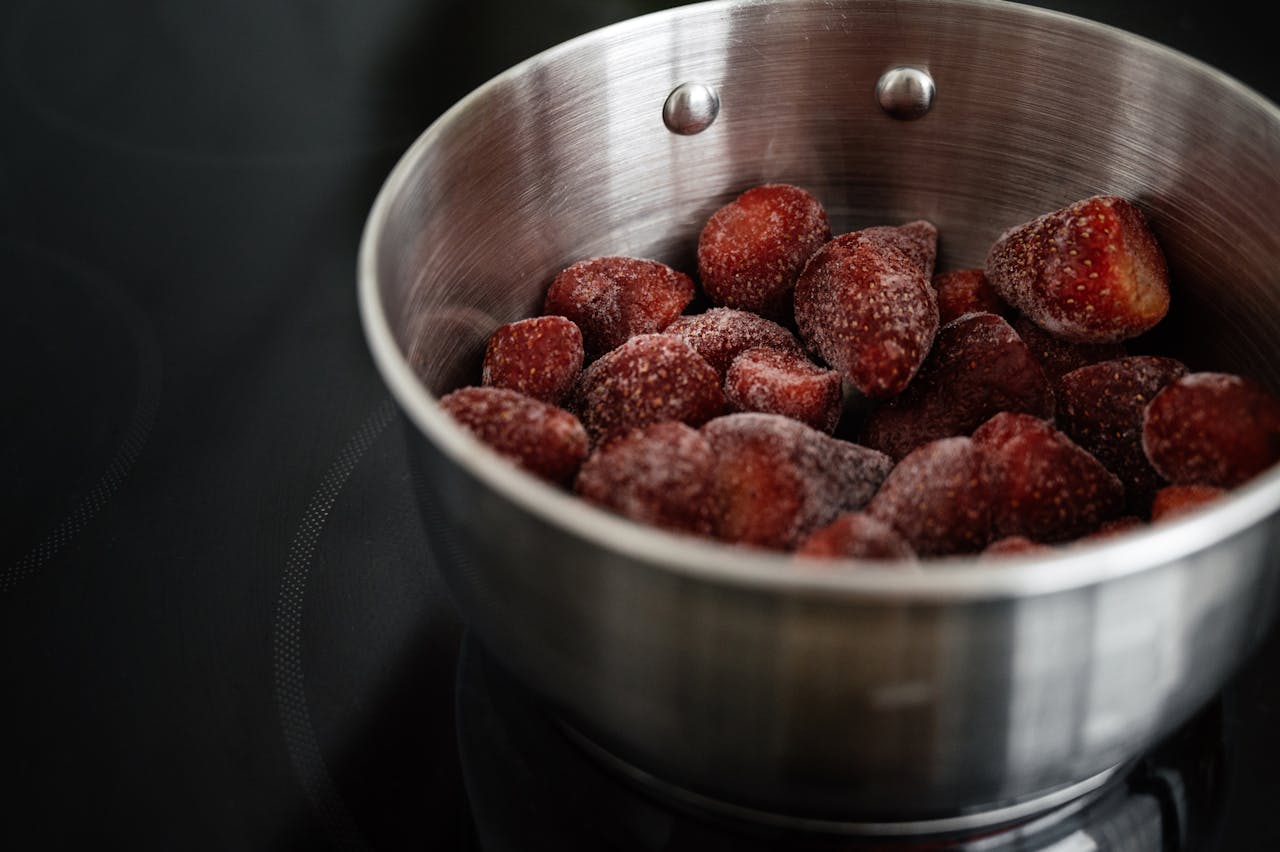
You walk into the grocery store, see a “fresh” label, and think you’re getting the best. But sometimes, that “fresh” food was frozen solid on a ship for weeks before it hit the shelf. This matters because you want to know what you’re really eating. Frozen foods can lose texture, flavor, and even nutrients. And if you’re paying more for “fresh,” you should get what you pay for. Understanding which foods are shipped frozen but sold as “fresh” helps you make better choices. Here’s what’s really going on behind those labels.
1. Shrimp
Shrimp is one of the most popular seafood items in the U.S. Most of it comes from farms in Southeast Asia or South America. To keep it from spoiling, companies freeze shrimp right after harvest. It’s then shipped in huge containers across the ocean. When it arrives, stores thaw it and put it in the seafood case with a “fresh” sign. The texture can be mushy, and the flavor isn’t the same as truly fresh shrimp. If you want real, fresh shrimp, look for local sources or ask if it was previously frozen.
2. Tilapia
Tilapia is another fish that’s often labeled “fresh” but is almost always shipped frozen. Most tilapia in U.S. stores comes from China or Latin America. It’s frozen soon after being caught or harvested. By the time it gets to your store, it’s been thawed and displayed as “fresh.” This process can affect the taste and texture. If you want to avoid this, check the packaging for “previously frozen” or ask the fishmonger directly.
3. Green Beans
Green beans are a staple in many kitchens. But if you see “fresh” green beans in the winter, they probably traveled a long way. Many green beans come from Guatemala or Mexico. They’re often blanched and frozen before shipping to keep them from spoiling. Once in the U.S., they’re thawed and sold as “fresh.” The beans may look good, but the snap and flavor can be lacking. For the best quality, buy green beans in season or from local farmers.
4. Berries
Berries are delicate and spoil quickly. To get them from places like Chile or Mexico to your grocery store, companies freeze them right after picking. When they arrive, they’re thawed and put in the produce section. The “fresh” label can be misleading. Thawed berries can be soft and watery. If you want the best berries, buy them in season or from local growers.
5. Peas
Peas are another vegetable that’s often shipped frozen. Most “fresh” peas in stores outside of spring are actually from overseas. They’re picked, blanched, and frozen to keep them from spoiling during the long trip. When they arrive, they’re thawed and sold as “fresh.” The flavor and texture can be disappointing. If you want real fresh peas, look for them at farmers’ markets in spring.
6. Calamari (Squid)
Calamari is a favorite in many seafood dishes. Most of the calamari in U.S. stores comes from Asia or Europe. It’s frozen soon after being caught, then shipped overseas. When it gets to the store, it’s thawed and labeled “fresh.” The freezing and thawing process can make calamari rubbery. If you want the best calamari, ask if it was previously frozen or look for local sources.
7. Asparagus
Asparagus is a spring vegetable, but you’ll see it in stores year-round. Much of the off-season asparagus comes from Peru. It’s often frozen for the long trip to the U.S. Once here, it’s thawed and sold as “fresh.” The texture can be limp, and the flavor isn’t as bright. For the best asparagus, buy it in spring from local farms.
8. Lobster Tails
Lobster tails are a luxury item, but most are shipped frozen from places like Canada or the Caribbean. They’re frozen right after being caught. When they arrive in the U.S., they’re thawed and sold as “fresh.” The freezing process can change the texture, making it less tender. If you want true, fresh lobster, buy whole live lobsters or ask about the source.
9. Garlic
Garlic is used in almost every kitchen. A lot of “fresh” garlic in stores comes from China. It’s often frozen to keep it from sprouting or spoiling during shipping. When it arrives, it’s thawed and put in the produce section. The flavor can be milder, and the texture can be off. For the best garlic, buy from local growers or farmers’ markets.
Why “Fresh” Labels Can Be Misleading
The word “fresh” on a label doesn’t always mean what you think. Many foods labeled “fresh” have been frozen for weeks or even months before reaching your store. This can affect taste, texture, and nutrition. If you care about getting the best quality, ask questions at the store. Look for signs that say “previously frozen.” Shop local and in season when you can. Knowing the truth behind the “fresh” label helps you make better choices for your meals and your wallet.
Have you ever bought something labeled “fresh” and found out it was previously frozen? Share your story in the comments.
Read More
Ever Wondered What the Average Price of a Gallon of Milk Is Across the Country? Here’s the Scoop
10 Reasons Why Aldi’s Is the Best Grocery Store Ever
The post 9 Foods That Are Labeled “Fresh” but Shipped Frozen from Overseas appeared first on Grocery Coupon Guide.







